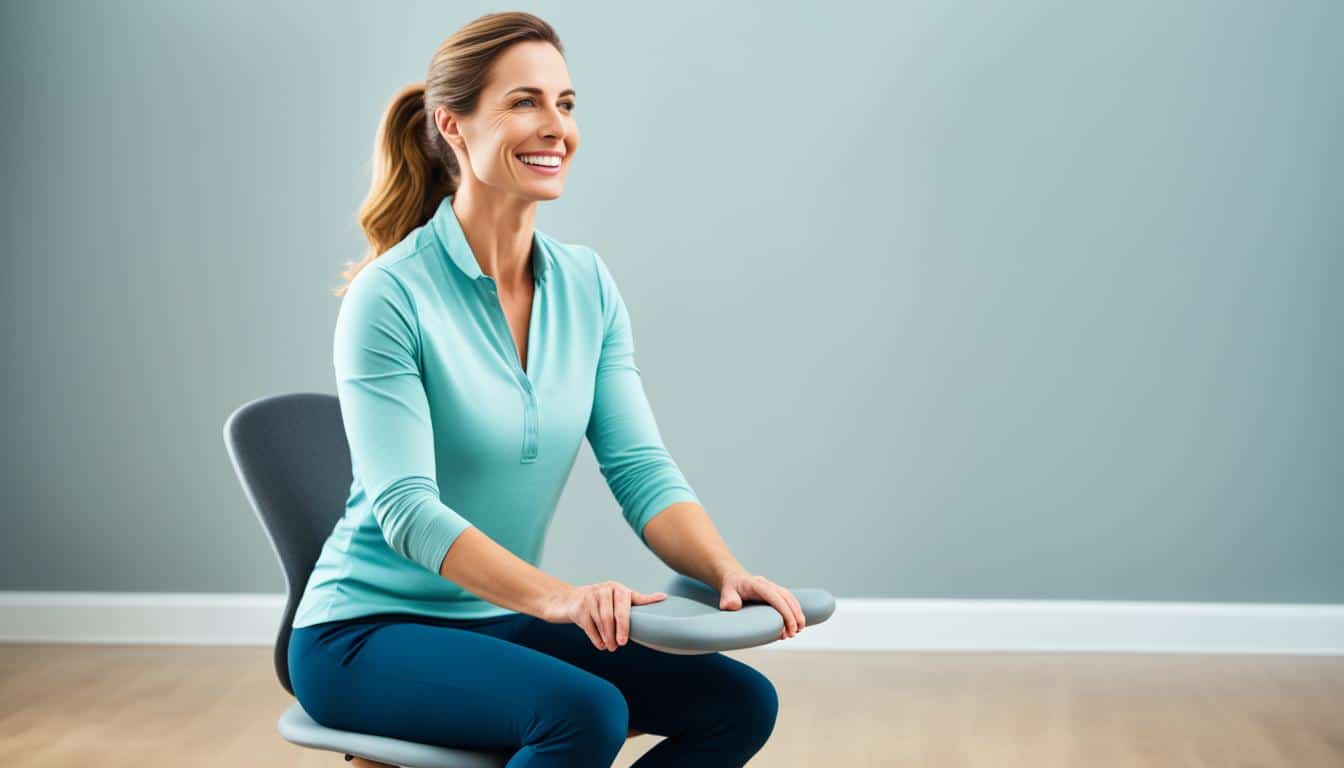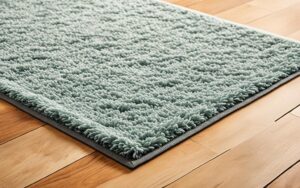Did you know that sitting for long hours can contribute to poor posture and back pain? In fact, studies have shown that the average American spends about 12 hours a day sitting, leading to various health issues.
But what if there was a seating alternative that could alleviate these problems and improve your posture?
Introducing the kneeling chair, a revolutionary ergonomic solution that offers comfort and support while promoting better spinal alignment and core engagement.
Using a kneeling chair properly can provide a range of benefits for your overall well-being and productivity. Whether you’re working from home or spending long hours at the office, understanding how to use a kneeling chair correctly is crucial for unlocking its full potential.
In this comprehensive guide, I’ll walk you through the benefits of using a kneeling chair and provide you with essential tips on how to use it effectively.
From proper posture techniques to selecting the right chair for your needs, you’ll have all the knowledge you need to master the art of sitting in a kneeling chair.
The Benefits of Using a Kneeling Chair
Using a kneeling chair offers several benefits for the body and overall well-being. The ergonomic design of a kneeling chair promotes better posture and provides various advantages compared to traditional chairs.

Improved Posture
One of the key benefits of using a kneeling chair is its ability to improve posture. By sitting in a forward-leaning position, the chair encourages proper spinal alignment and reduces strain on the back. This can help alleviate discomfort and prevent long-term posture-related issues.
Reduced Back and Neck Pain
The design of a kneeling chair helps distribute body weight more evenly, relieving pressure on the lower back and neck. This can greatly reduce the risk of developing chronic pain in these areas, especially for individuals who spend long hours seated.
Enhanced Core Engagement
When using a kneeling chair, the body naturally engages the core muscles to maintain balance and stability. This constant activation of the core can lead to improved core strength and stability over time.
Increased Blood Circulation
The open position of a kneeling chair allows for better blood circulation throughout the body. By avoiding prolonged compression of the lower body, a kneeling chair promotes healthier blood flow and reduces the risk of conditions related to poor circulation.
Added Comfort and Flexibility
Kneeling chairs often come with adjustable features that allow users to customize their seating position. This adaptability enhances comfort, preventing stiffness and promoting freedom of movement.
Overall, incorporating a kneeling chair into your workspace can have a positive impact on your physical well-being. Its ergonomic benefits contribute to better posture, reduced pain, improved core engagement, increased blood circulation, and enhanced comfort and flexibility.
Proper Use and Considerations for a Kneeling Chair
When it comes to choosing the right kneeling chair, there are a few considerations that can help ensure optimal comfort and support. Firstly, it is important to select a chair that is ergonomically designed and adjustable.
Look for features such as adjustable seat and knee pad heights, as well as a sturdy frame that can support your weight.
Once you have chosen the right kneeling chair, it is crucial to set it up correctly to reap its benefits. Start by adjusting the chair to a height that allows your feet to rest flat on the ground, with your knees at a 90-degree angle.
This position provides optimal support for your spine and helps maintain proper posture throughout the day.
Another best practice for using a kneeling chair is to take regular breaks and adjust your sitting position. Even though kneeling chairs promote proper alignment, it is important to avoid staying in one position for extended periods.
Stand up, stretch, and move around to maintain good blood circulation and reduce any potential discomfort.
Lastly, it is essential to listen to your body and make any necessary adjustments to your kneeling chair setup. Experiment with different knee pad angles and seat positions to find what feels most comfortable for you.
Everyone’s body is different, so it is important to customize your kneeling chair setup to fit your unique needs and preferences.
FAQs
How Do I Use A Kneeling Chair?
To use a kneeling chair, start by adjusting the height to ensure your feet are firmly planted on the ground. Place your shins and knees on the lower pad and your buttocks on the seat.
Maintain an upright posture, engaging your core and keeping your back straight. Allow your body to naturally curve, with your shoulders relaxed and your head aligned with your spine.
What Are The Benefits Of Using A Kneeling Chair?
Using a kneeling chair offers several benefits, including improved posture, reduced strain on the spine, and increased core engagement. It encourages proper spinal alignment, pelvic tilt, and strengthens the muscles in the back and abdomen.
Additionally, it promotes better circulation and helps alleviate pain and discomfort caused by prolonged sitting.
How Do I Choose The Right Kneeling Chair?
When choosing a kneeling chair, consider the height and weight capacity to ensure it can accommodate your body size. Look for a chair with adjustable features, such as seat and knee pad height, to customize the fit to your needs.
It’s also essential to choose a chair with good lumbar support and durable construction for long-term use.
What Are Some Best Practices For Using A Kneeling Chair?
To make the most of your kneeling chair, remember to take regular breaks to stand and stretch. Maintain proper posture by keeping your back straight and shoulders relaxed.
Avoid sitting in one position for too long and adjust the chair’s height and angle to find the most comfortable and supportive position for your body.
How Should I Set Up My Kneeling Chair Correctly?
To set up your kneeling chair correctly, start by adjusting the seat height so that your feet are flat on the ground and your knees rest comfortably on the knee pad.
Ensure the angle of the seat allows for a natural forward tilt of your pelvis. Adjust the knee pad height to support your shins and knees without causing discomfort or pressure.
Experiment with different positions and angles until you find the optimal setup for your body.









